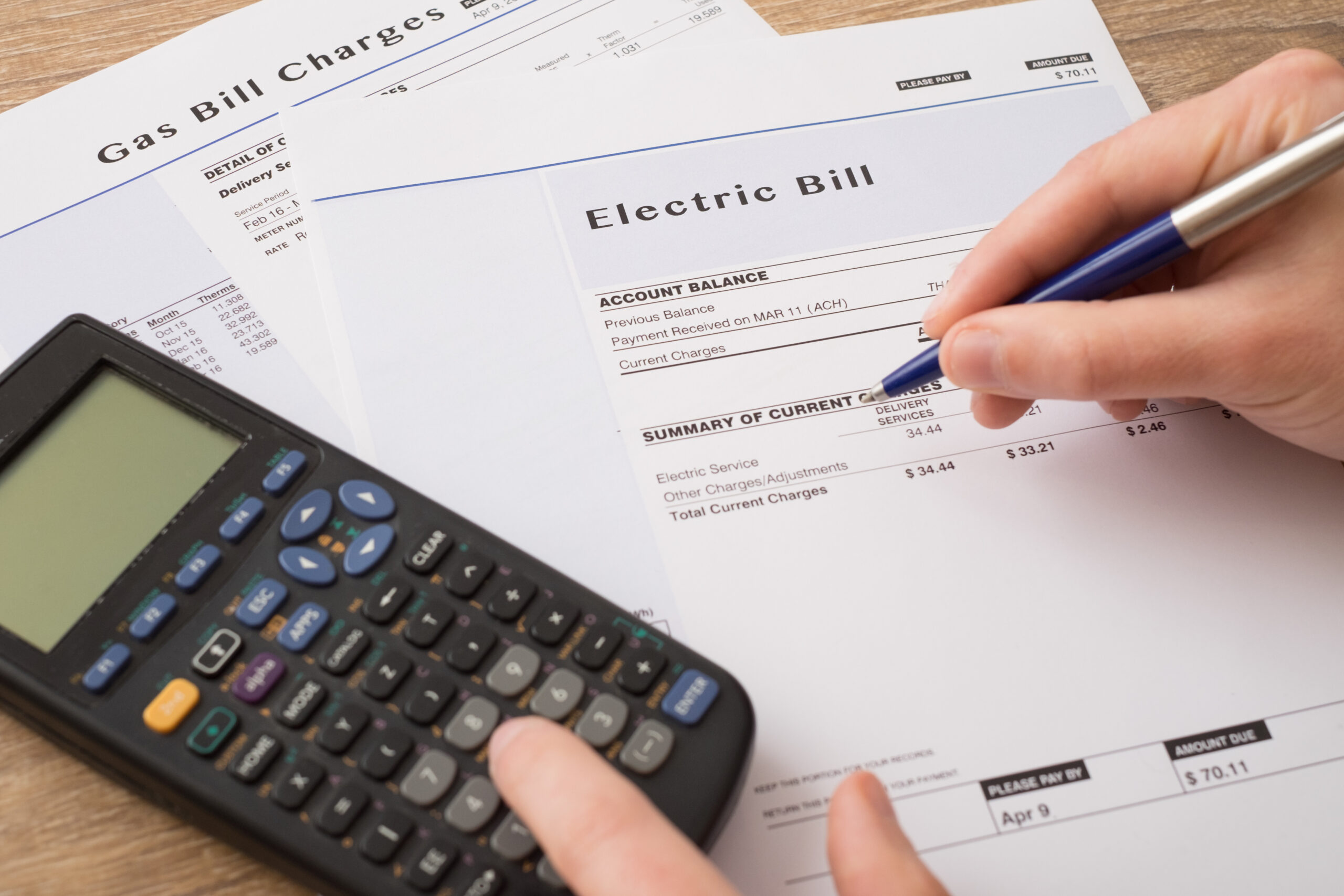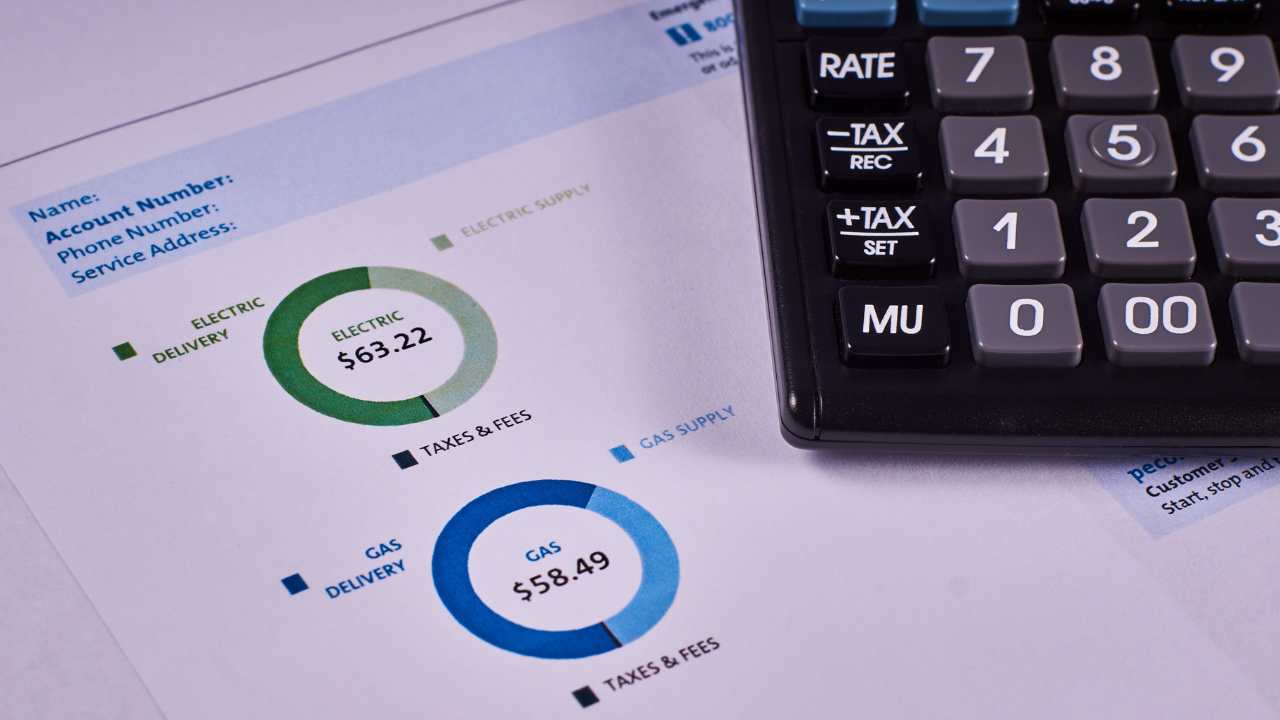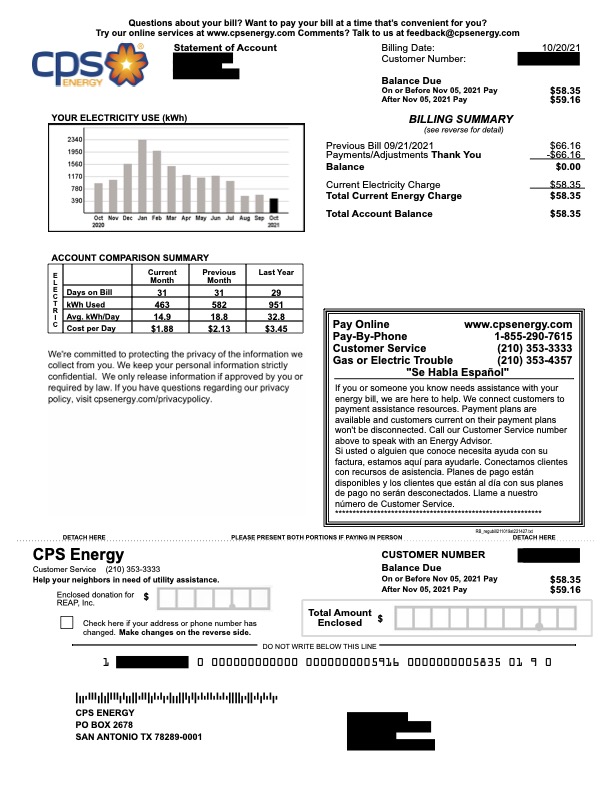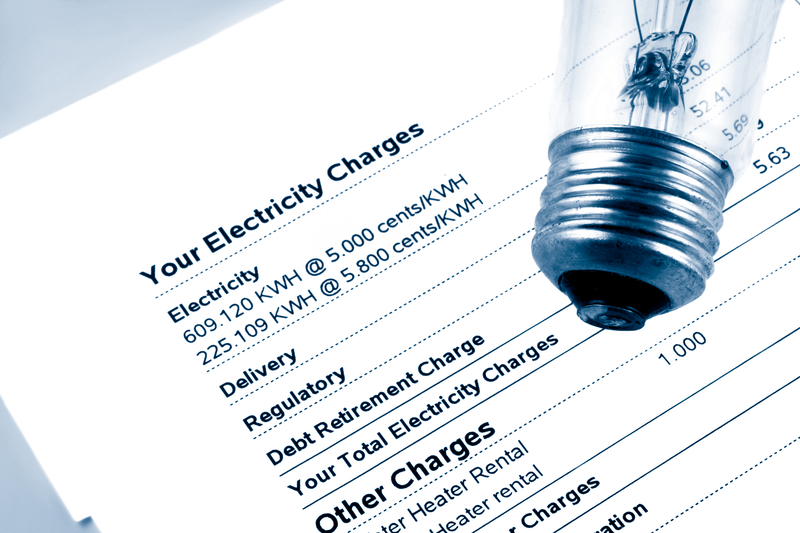This article is your compelte guide to understanding how to read your Texas electricity bill. Electricity bills can be confusing to read. Especially when you have various charges and rates applied in one bill. In Texas, the energy market is deregulated, this means that you have the choice in who provides your electricity. So understanding your electricity bill is crucial to make sure you are not only paying the right amount but also choosing the most cost-effective service provider.
Here at The Energy Professor, we want to give you the information you need to not only save money on your energy bill, but to also become more energy efficient. We hope you find this post helpful! And makes it easier for you to know more about reading your Texas energy bill. Be sure to also check out our one of a kind energy savings calculator!
The Energy Professor Electricity Rate Check Tool
How to Understand Your Texas Power Bill

Each bill typically includes sections like usage summary, detailed charges, and account information. These topics break down your consumption in kilowatt-hours (kWh) and the associated costs. It’s important to understand these sections to monitor your energy usage patterns and ensure accurate billing. Key components to focus on include the energy charge, based on the kWh used, and additional fees such as utility and delivery charges. These fees will contribute to the total amount due.
- Average kWh: Compare your usage to previous months to identify seasonal changes.
- Energy Charge: Understand how rates can change based on your usage.
- TDU Charge: Check for regulatory changes that might affect your bill.
- Plan Changes: Look for unexpected changes in your plan that might increase costs.
What to Know When Reading Your Texas Electric Bill
When you receive your Texas electric bill, it’s composed of several key components that contribute to your total cost. These include the base rate, energy charge, utility fees, and taxes. The base rate is a fixed cost covering the customer service and infrastructure maintenance. The energy charge relates directly to the kWh (kilowatt-hour) usage. Utility fees are additional charges that may include costs for transmission and distribution.
Related Post: What’s the Difference Between a Kilowatt and a Kilowatt Hour?
Reading Your Texas Bill

When reading your Texas energy bill, focus on key sections: the Account Summary for billing details, the Usage Summary for kWh consumption, and Charge Details for a breakdown of costs and fees. Comparison Graphs may also be included to visually compare your current energy use with past months, helping you track consumption trends. Understanding these elements is crucial for managing your energy expenses efficiently.
Reading your electricity bill in Texas involves looking at several important sections:
- Account Summary: This section provides a quick overview of your billing period, total amount due, and due date.
- Usage Summary: Here, you’ll see your energy usage in kWh, which is crucial for understanding how much electricity you’ve consumed during the billing cycle.
- Charge Details: This area breaks down the specific costs, including the energy charge, customer charge, and any additional fees or taxes.
- Comparison Graphs: Many bills include graphs comparing your current usage to past months, which can help you track your consumption patterns over time.
Understanding these sections can help you better manage your energy usage and ensure you are being billed correctly.
Related Post: Shop and Compare Texas Electricty Rates
Texas Energy Bill Sample

To provide a clearer picture, let’s dissect a sample Texas electricity bill:
- Account Information: Includes your account number, billing date, and contact information for your energy provider.
- Energy Used: Shows the total kWh used and the corresponding charges.
- Taxes and Fees: Details all applicable state and local taxes, as well as utility fees.
- Total Amount Due: The final amount you are required to pay.
By examining each part of a sample bill, you can learn to identify where your costs are coming from and what each part of the bill means.
Related Post: 10 Renewable Energy Providers in Texas
Reading Your Texas Electricity Bill FAQ

Q: How to read an energy bill in Texas?
A: Focus on the total kWh used, as this is what your energy charge is based on. Review the detailed charges for energy usage, delivery charges, and any applicable taxes or fees.
Q: How to read the electricity bill?
A: Understand each section—account summary, usage details, charge breakdown, and comparison to previous billing periods. Look for any unusual spikes in usage or unexpected fees.
Q: How to calculate your electric bill in Texas?
A: Multiply the kWh used during the billing period by the rate charged per kWh (found in the charge details). Add any additional fees and taxes to determine the total cost.
Q: What is a normal Texas electric bill?
A: The average electric bill in Texas can vary significantly depending on the size of the home, usage habits, and the season. Generally, the average bill can range from $100 to $200 per month.
Do you Need Cheaper Electricity?
If you’ve taken the time to understand the information on your bill and discovered you’re paying more than you’d like for your electricity, have you looked around for a cheaper deal? The Energy Professor has a wealth of information on ways to save on your utilities, including details of top deals that could significantly reduce your monthly or quarterly electricity bills.
We hope you found this article helpful! If you are looking for ways to increase the energy efficiency and sustainability in your home be sure to take a look at all of the latest renewable energy options in your area. The Energy Professor helps residential and small business owners find qualified energy suppliers in New York, New Jersey, Pennsylvania, Texas, Ohio, Maryland, Illinois, and Massachusetts.

